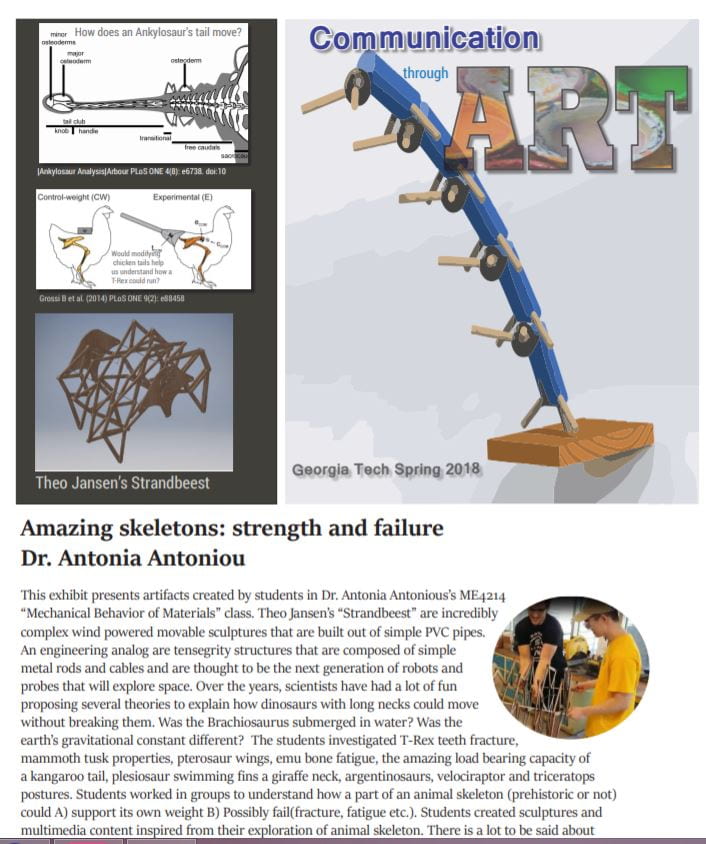Amazing skeletons: strength and failure
Mechanical Engineering 4214, Mechanical Behavior of Materials
Spring 2018
Professor: Antonia Antoniou
 Project Description:
Project Description:
Specifically to develop and demonstrate an ability to visualize and understand the fundamental behavior of structures and solids as well as to examine case studies of failure. Each group of students was asked to choose one natural object, analyze its structure and create a sculpture based on that object.
Inspiration: Theo Jansen’s “Strandbeest” are incredibly complex wind powered movable sculptures that are built out of simple PVC pipes (and a bunsen burner). An engineering analog are tensegrity structures that are composed of simple metal rods and cables. Tensegrity structures are thought to be the next generation of robots and probes that will travel and explore space. There is a lot to be said about drawing inspiration from art and biological structures to understand how engineering structures can be fabricated. In fact, this precise exploration may also help us understand how dinosaurs were able to move while supporting their own weight (without resorting to crazy theories). Scientists have had a lot of fun studying this topic . For example, several theories have been proposed to explain how dinosaurs with long necks could move their necks without breaking them (e.g. Brachiosaurus) or how T-Rex could run, or how ankylosaur’s tail moves.
Assignment:
- Group was tasked to observe and photograph dinosaur (or other animal) skeletons and use structural analysis concepts from the class to analyze how (a part of) a skeleton could support its own weight.
- From this analysis, groups were asked to fabricate their own dinosaur/”strandbeest sculptures using simple structural components (use wood, cables, metal or pvc pipes or even 3D print components using the invention studio at ME).
- Groups were asked to document the work and creative process either by using short videos, status recordings, photographs etc.
 Peacock Sun Catcher
Peacock Sun Catcher
Artists: Alexander R. Murphy, Anna Marie Pinion, Nathan S. Chow, Timothy W. Stern
Artist Statement: This peacock sun catcher was inspired by an exploration of possible avenues for analysis that involve prehistoric creatures and their descendants. The kinetic aspect of this sculpture captures the shifting relationship between biology and engineering design evident in the canon of research literature on bio-inspired design strategies. By utilizing clear acrylic and sharp geometry in mimicry of a peacock’s feathers, this sculpture achieves an effect similar to that of stained glass.
Audio Descriptive: Velociraptor
Artists: Ian Sebastian, Joey Shutz, William Chen, Xin Li
Artist Statement: Our team set out to illustrate just how the velociraptor was able to stabilize itself. The model, based off of real life velociraptor legs, carries a load similar to that of a velociraptor to show that the unique bone structure of the creature was what allowed it to move.
Velociraptors are an often misunderstood dinosaur, due to its inaccurate representation in media. Whereas the film Jurassic Park,
portrays the velociraptor as viscous hunters,that travel in packs, scientists believe they were scavengers that traveled alone. However, the
velociraptor is a known omnivore…..

